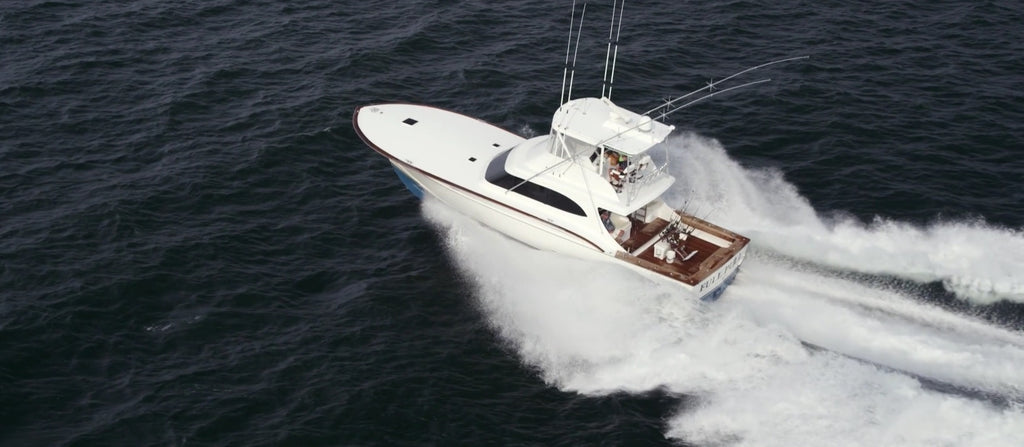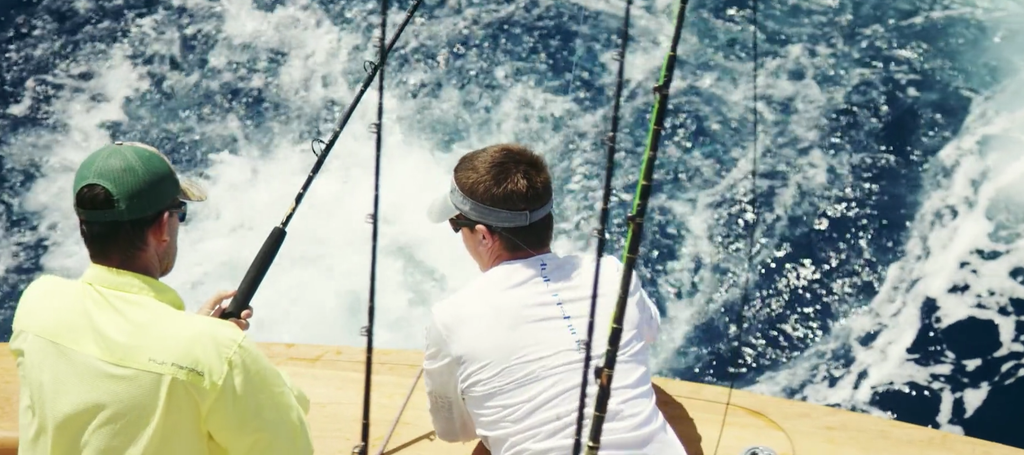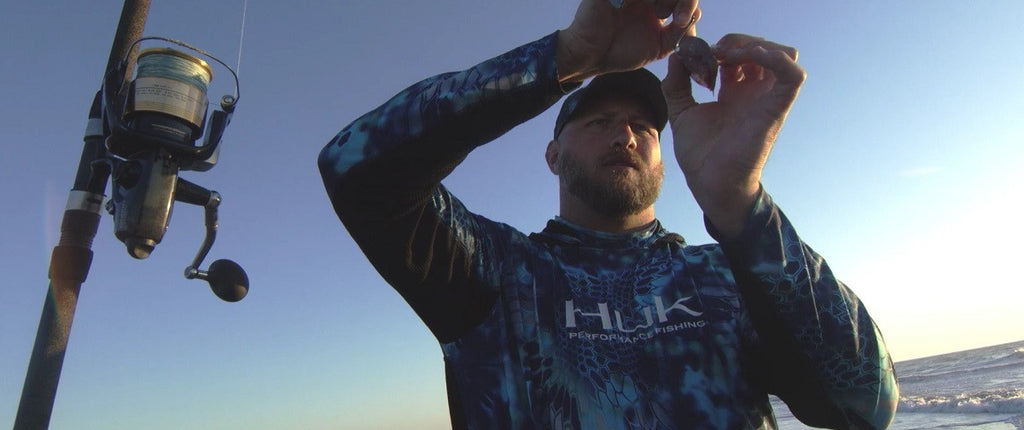If you're curious about what it takes to catch a white marlin—maybe you've heard of the massive sums of prize money up for grabs at the white marlin tournaments each year—you’ve come to the right place. In this article, we’ll provide essential white marlin fishing tips, techniques and gear to help you find success.
White Marlin Facts

Before we get into marlin fishing techniques and tactics, let's profile ol' whitey so we know who we're dealing with. Think of these white marlin facts are the stats of your opponent:
- White marlins are the smallest marlin species averaging 60 to 80 pounds and measuring 4.5 to 6 feet long. However, fully mature whites can reach weights of over 150 pounds and push 8 feet long.
- The current white marlin all-tackle world record was caught off Vitoria, Brazil in 1979 and weighed 181 lb, 14 oz.
- Primarily hunting in small packs, white marlins team up to attack schools of bait—mostly squid, sardines, and mackerel—using their bills to stun and slash the prey before eating.
- Every year, white marlins migrate from the waters off the northern coast of South America, through the Caribbean, and continue north along the Gulf Stream.
- Some of the best white marlin fishing is had in the summer months in the Mid-Atlantic off the east coast of the U.S. from North Carolina to New Jersey.
Marlin Fishing Equipment

While you don't need a mega-tricked-out sport fishing yacht to catch white marlin, it definitely doesn't hurt. An offshore-ready vessel with high-powered sonar is a must, however, and for any chance at landing a catch, the following marlin fishing equipment is essential:
- Outriggers. Trolling wide spreads of bait and teasers is the name of the marlin fishing game. To do this effectively, long outriggers are needed to keep the many lines away from the boat and each other.
- Dredges. A quintessential piece of marlin fishing kit, dredges are multi-armed teaser systems designed to imitate a school of baitfish while trolling. Most marlin boats have one dredge on each side rigged with dozens of natural baitfish—most commonly ballyhoo or mullet. Rigging and managing dredges is very labor intensive but absolutely necessary to draw in white marlins.
- Plastic squid daisy chains. Another important part of a marlin spread is a pair of daisy chains rigged with plastic squid that help bring marlins into the spread.
Marlin Fishing Reels

White marlins are prime candidates for light tackle stand-up fishing. No need to strap into a fighting chair. A simple fighting belt is all you need.
And by "light" we mean 20 to 30-pound class reels and line. You see lots of Shimano Tiagra's on white marlin boats and you really can't go wrong with these rock-solid reels. Other manufacturers like Penn, Accurate, and Alutecnos also make great marlin fishing reels. Spool them up with 30-pound braided line and you're set.
Marlin Fishing Tackle

Aside from the gear involved in a white marlin trolling spread, the terminal tackle used is very simple:
- The leader of choice for white marlin is 50 to 60-pound fluorocarbon. Most anglers targeting whites rig their leaders as "wind-on" leaders, which involves tying on the leader with a line-to-line connection such that the leader can be "wound-on" to the reel.
- When using natural bait, 7/0 circle hooks are used for optimal hookups. Circle hooks essentially set themselves right in the corner of the marlin's mouth and, once stuck, are very difficult for the fish to shake loose. They also greatly reduce the odds of fish getting gut-hooked.
White Marlin Fishing Techniques

The first key to successful white marlin fishing is setting up an effective spread using the dredges, outriggers, and daisy chain teasers. Within the spread, several rods rigged with natural baits—again, small "dink" ballyhoo are a favorite—are set and closely watched by the dedicated anglers handling the rods.
When chasing whites, marlin boat captains first run offshore to waters typically deeper than 1,000 fathoms. Once out there, they focus on finding areas with bottom structure such as canyons, banks, pinnacles, and shoals where bait and marlin concentrate. They rely heavily on their fish-finders to find structure and bait as well as areas with changes in water temperature, which marlins tend to favorite.

When a likely marlin-holding area is identified, the spread is set out and a troll of around 7 knots begins. The dredges are a key part of this equation and are heavily weighted to stay submerged while trolling. During the troll, the anglers stay with their rods the entire time. The drags on their reels are set as light as possible, just heavy enough to hold the baits as they're pulled behind the boat.
At least one crew member stays up high on the bridge watching the spread, ready to announce any sign of a marlin entering the spread. When a marlin is spotted they call out and the anglers get ready. When a marlin enters the spread, the anglers immediately set their reels to free spool, using their thumbs on the spool to keep the line tight. White marlins are very cautious eaters and the slightest hint of resistance on the line can cause them to spit the bait.
As soon as a marlin takes the bait, the angler releases thumb pressure on the spool as much as possible without creating a backlash. Ideally, the marlin swallows the bait without feeling the line. Then, the angler tightens the drag to set the hook. From then on out it's a stand-up fight. Angler versus marlin, pumping and reeling until the fish is boat side.
How to "Leader" a Marlin

Leadering—also known as "wiring"—is the final act of landing a marlin or any big game fish for that matter. It's a simple task but requires a tremendous amount of skill and experience to execute smoothly and safely. The risk of being pulled overboard is always present.
As soon as the angler brings the marlin boat side, a designated crew member—the leader man—uses well-padded gloves to grab the leader in order to either release the fish by snipping the line at the hook or hold the fish in position while another crew member gaffs the fish to hoist it aboard.
White Marlin Tournaments

As we alluded to, there is big money to be won by anglers who compete in the several white marlin tournaments held every year.
- The Beach Haven White Marlin Invitational, held in Beach Haven, New Jersey, kicks off the season in late July. As the name implies, it's an invite-only tournament but has a rich history as the longest running marlin tournament in the country.
- Then in early August, the biggest billfish tournament in the world takes place—the Ocean City White Marlin Open held in Ocean City, Maryland. All anglers are invited to compete in this huge event, and it draws some of the most prolific marlin fishing teams to chase the giant purse which can exceed $2 million.
- The last big white marlin tournament of the year is the Mid-Atlantic $500,000 in Cape May, New Jersey at the end of August. Staying true to its name, six-figure chunks of cash are on the table and the most hardcore marlin anglers show up with dreams of taking it all.
Of course, you don't need to have high stakes and heated competition to go after white marlin. But doesn't that make it a little more interesting?
Get The Edge Over The Fish
Ready to take on the action? White marlin fishing is not child’s play. You need every edge you can get. Gear up with high performance fishing clothing from Huk!









